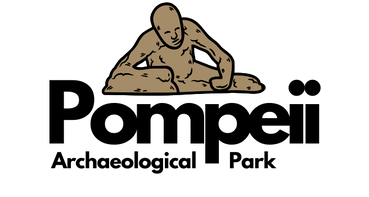Hercules Temple in Pompeii: The Hero-God at the Heart of the Ancient City
Table of Contents
A Hero’s Sacred Ground
Before the roar of gladiators filled the amphitheater and long before the emperors stamped their mark on Pompeii, the city looked up to Hercules. His presence wasn’t a passing story. It was etched into the stones of one of Pompeii’s earliest sacred places: the Hercules Temple in Pompeii, standing at the edge of the Triangular Forum. Even in ruins, this spot whispers of a time when myth and daily life were inseparable.
Hercules Temple in Pompeii: The Triangular Forum and Its Temple
The Triangular Forum feels different from the main forum that most visitors rush to. Perched above the Sarno Valley, it opens to a wide, breathtaking view. Imagine the impression it must have left on early settlers — a natural stage for worship. At its center rose a Doric temple, built in the 6th century BC, making it one of the oldest religious buildings in Pompeii.
But who exactly was honored here? For decades, scholars debated. Was it Hercules alone? Or Athena by his side? The terracotta decorations that depict both deities make a strong case for shared worship. And perhaps that’s the most telling detail of all — Pompeii, in its early years, was not yet fully Roman. It absorbed Oscan, Greek, and Italic influences, and the temple reflected that mix.
Hercules and Athena Together

Why Hercules with Athena? Think about it: strength and wisdom, endurance and strategy. For a city still carving out its place in a contested region, those were the divine allies you wanted. The choice also spoke to Pompeii’s ties with Greek culture. The Doric style itself is a Greek echo, a reminder that Pompeii’s early identity leaned toward Hellenic traditions just as much as Italic ones.
So when citizens gathered in the temple, they weren’t simply bowing to myth. They were affirming values that guided their community — power tempered with wisdom, courage balanced with reason.
Civic and Religious Life

The Hercules Temple in Pompeii was never just a sacred spot for rituals. Like many ancient temples, it was also a civic anchor. Political life, public ceremonies, and religious devotion were all tied together. To honor Hercules here was to place him at the very heart of the city’s identity.
And what better figure for the job? Hercules was more than a hero of twelve labors. He was a unifying symbol, respected across cultures from Greece to Rome. The fact that Pompeii chose him so early shows how much they wanted their city to be linked to that larger world of myth and strength.
Why Hercules?
Pompeii’s geography explains much of it. Nestled between Oscan tribes, Greek colonies, and the advancing power of Rome, the city was a true crossroads. Hercules — half mortal, half god, constantly on the move between lands and trials — was the perfect mirror. By dedicating a temple to him, Pompeii was saying: “We are resilient, we endure, and we belong to this wider Mediterranean story.”
What You See Today

Walk there now, and the temple may seem modest. Only the foundations and a few fragments of columns remain. But stand in the Triangular Forum, gaze across the valley, and it’s easy to imagine the temple as it once was — a porch with columns, an altar smoking with sacrifices, priests chanting as citizens watched.
This part of Pompeii is quieter than the crowded streets around the amphitheater. Perhaps that makes it even more powerful. With fewer distractions, you can almost hear the echoes of ancient rituals carried on the wind.
More Than Ruins
The Hercules Temple in Pompeii is not just another pile of stones. It tells us about the city’s beginnings, about how myths became civic identity, about how faith and politics merged in everyday life.
Think of it this way: before AD 79, before tragedy froze Pompeii in ash, people here already saw their future through the lens of a hero-god. Hercules gave them strength, a story, and a name to stand behind. His temple may lie in ruins, but the values it symbolized — endurance, resilience, belonging — still stand.
